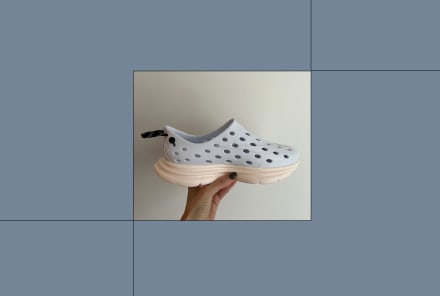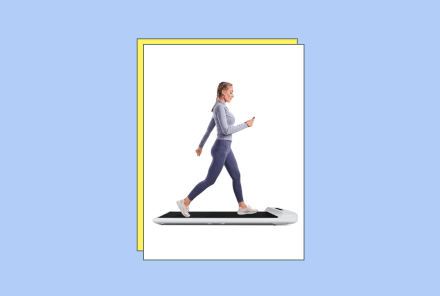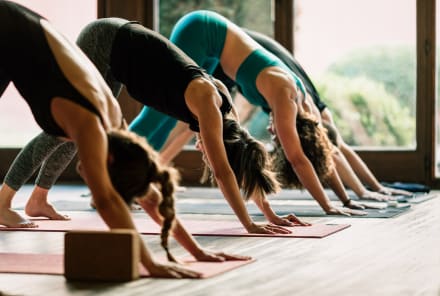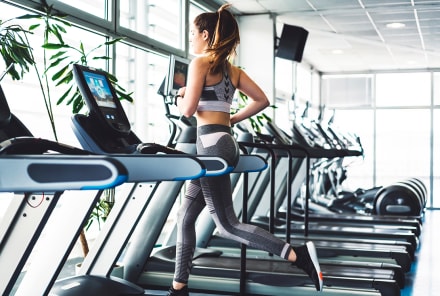Advertisement
A Step-By-Step Guide To Nailing A Headstand Without Hurting Yourself

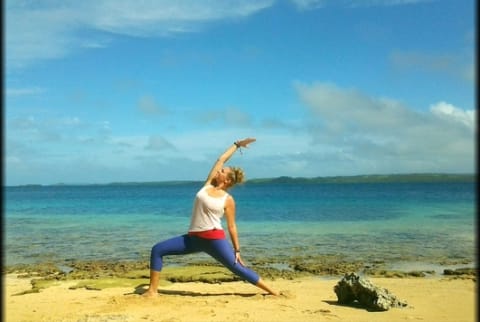
The myriad benefits of a regular inversion practice have been highly touted among the yoga community for ages. And no, this is not just because there are countless headstand and handstand pictures floating around the internet.
Believe it or not, there is a deeper and more meaningful reason why yogis choose to go upside down.
By defying gravity and reversing the flow of blood, you are essentially supplying the mind and body with freshly oxygenated blood and nutrients that they wouldn't normally obtain from standing upright. The benefits manifest in a multitude of ways such as reduced muscle stiffness, improved blood circulation, improved digestion, clear skin, hair growth, and a deep sense of inner tranquility.
The most amazing benefit to getting upside down is that inversions encompass the power to minimize the symptoms of depression. Headstands are responsible for easing melancholy simply because they quiet the ego. Think about it: While you are holding headstand, you have no choice but to concentrate on just the breath and the posture. The ego has no time to ruminate over the same old problems. It is forced to remain in a dormant state.
For when the ego is active, you risk falling out of the pose. The ego hates falling just as much as it hates failing. It equates the two as one in the same. That being said, you now have the ego in a vulnerable position while upside down. For once, it wants to cooperate in order to avoid any potential falls or perceived "failures" on its part.
Quieting the ego is the key to a happy and peaceful life. The more often you practice taming the ego through headstand, the more often you will experience the positive effects, on and off the mat.
Of course the ego is gradually tamed through all yoga poses, but practicing headstand (sirsasana) puts you on a fast track to inner tranquility.
Below is a step-by- step tutorial on how to get up into headstand. If you are a sirsasana virgin, I highly recommend practicing against a wall. Having a wall behind you provides both the physical and mental security required when you are first attempting to stand on your head. When you practice against a wall, you have more control over the fall when the time comes. Because it will come. It always does and it always will.
Don't let it derail you. Just dust yourself off and try again. And please consult with your doctor if you have any serious head, neck, or spinal issues. Also, if you have a heart condition or high blood pressure, double check with your physician before attempting to practice headstand.
Do not practice this pose if you are pregnant! There are many (other) safe alternatives that you can practice during pregnancy if you are looking to get upside down.
Step 1
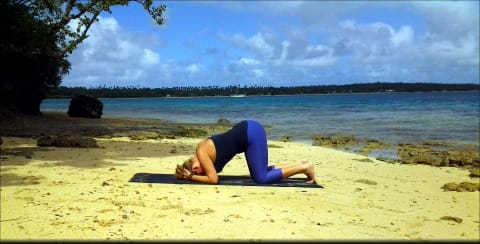
Start by kneeling on the mat with the forearms down. Clasp the hands together, interlacing the fingers. Place the crown of the head down, cradling the back of your head with your hands.
Step 2
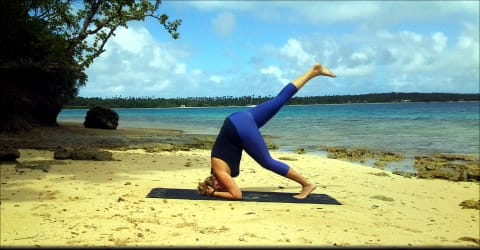
Curl the toes and come up into a modified dolphin pose. Walk the feet in as close to the body as possible.
Step 3
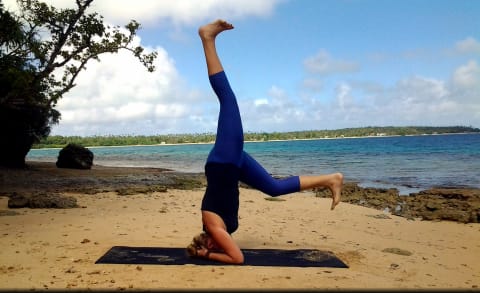
Bend the left knee deeply and extend the right leg straight up into the air. Start by taking little hops, using the left leg to push off. You may not get much further than this step your first, or 50th, time. That's OK. Just practice taking little hops until you start to find your center of balance.
Note: Keep the weight in your forearms. Putting pressure on the crown of your head can result in neck or spinal problems. Be cognizant of your alignment to avoid injuries!
Step 4
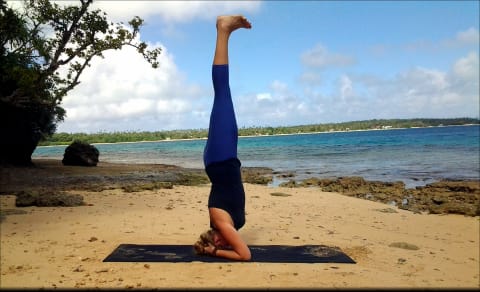
Once you find your center of balance, which may take a long time, slowly raise the left leg up to meet the right. Control the core muscles to stabilize. When you are ready, slowly come out of headstand, one leg at a time, and rest in child's pose.
Finally, take downward dog to let the head and neck hang free.
Watch Next
Enjoy some of our favorite clips from classes
Enjoy some of our favorite clips from classes
What Is Meditation?
Mindfulness/Spirituality | Light Watkins
Box Breathing
Mindfulness/Spirituality | Gwen Dittmar
What Breathwork Can Address
Mindfulness/Spirituality | Gwen Dittmar
The 8 Limbs of Yoga - What is Asana?
Yoga | Caley Alyssa
Two Standing Postures to Open Up Tight Hips
Yoga | Caley Alyssa
How Plants Can Optimize Athletic Performance
Nutrition | Rich Roll
What to Eat Before a Workout
Nutrition | Rich Roll
How Ayurveda Helps Us Navigate Modern Life
Nutrition | Sahara Rose
Messages About Love & Relationships
Love & Relationships | Esther Perel
Love Languages
Love & Relationships | Esther Perel



